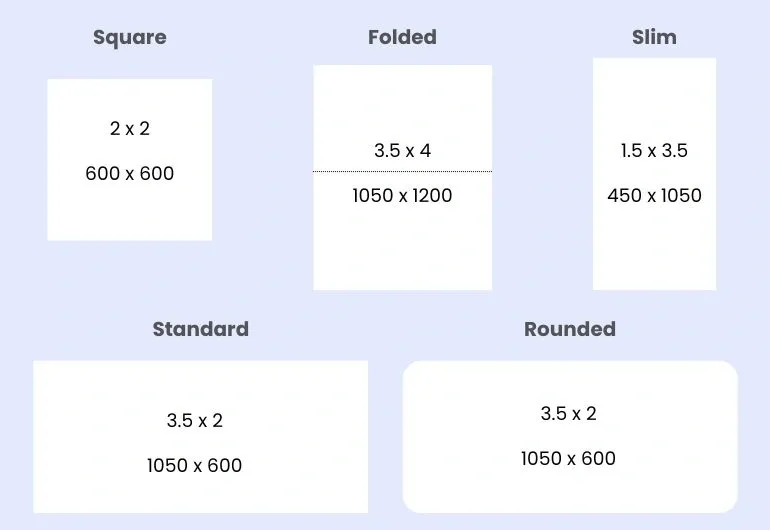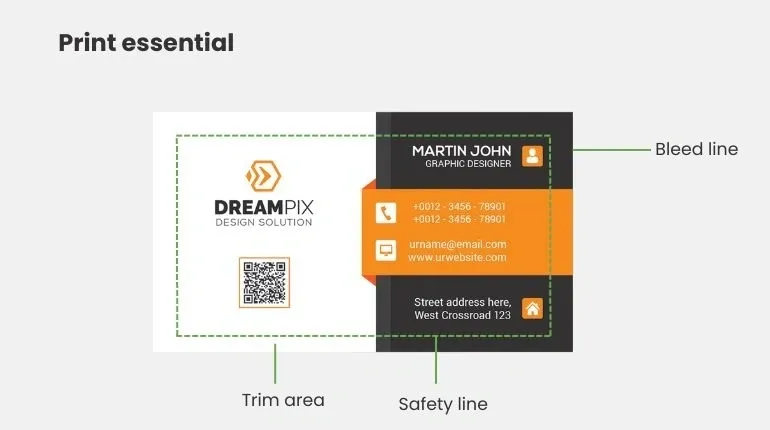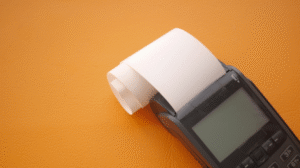Choosing the rightbusiness cardsize is essential to creating a strong first impression. A well-proportioned card not only enhances the design but also ensures it fits standard cardholders and wallets, making it practical for everyday use.
The most common business card size is 3.5 x 2 inches (88.9 x 50.8 mm)—but that’s just the standard in the U.S. and Canada. If you’re targeting international clients or want a unique design, it helps to know the exact dimensions used around the world.
In this guide, you’ll get a full breakdown of business card dimensions in inches, millimeters, and centimeters, including popular formats in Europe, Asia, and beyond—so you can create a card that fits wherever your brand travels.
Key Takeaways
- The most common standard business card size is 3.5 x 2 inches (or 89 x 51 millimeters). This size is widely used in the United States and Canada.
- Don’t overlook printing basics like bleed areas, trim lines, and safety zones. Also, using high-res images, clean fonts, and quality paper ensures your card looks sharp and leaves the right impression.
What is the size of a standard business card?
The standard size for a business card is 3.5″ x 2.0″, commonly used in the U.S. and Canada. However, sizes may vary slightly depending on regional preferences and printing standards.
Below are the standard business card sizes around the globe:

Business Card Size in Pixels: 1050 x 600 pixels
For creating a visiting card, the pixel dimensions for the actual size are 1050 x 600. For a full bleed, use 1083 x 633 pixels, and maintain a safe printing area of 1008 x 558 pixels.
Business card size types
- Standard (3.5″ x 2″): The classic choice for business cards, this size fits easily into wallets and business card organisers, ensuring easy storage and retrieval. It’s a staple for networking events and professional encounters due to its universal recognition.
- Square (2″ x 2″):Breaking away from tradition, square visiting cards offer a modern twist that grabs attention. Ideal for creatives like photographers or artists looking to showcase their work in a distinctive manner.
- Rounded (3.5″ x 2″): Rounded corners add a touch of sophistication while enhancing durability. Perfect for upscale businesses or those in creative industries, they soften the overall aesthetic and leave a lasting impression.
- Folded (3.5″ x 4″):Doubling the space of a standard card, folded visiting cards offer room for additional information or details like product listings or service menus. They serve as mini-brochures, conveying comprehensive messages in a compact format.
- Slim (1.5″ x 3.5″): Sleek and minimalist, slim visiting cards stand out with their unique proportions. Slim cards are perfect for professionals in industries like fashion, design, or luxury brands, where aesthetics play a crucial role in brand perception.

Business card dimension guidelines
When designing your business cards, it’s essential to consider three key areas: the bleed area, trim line, and safety line.
- Bleed Area:This is the outermost edge of your design, extending beyond the trim lines. It ensures there are no unprinted edges after cutting. Typically, it extends 0.125 inches beyond the final card size on each side. For instance, if you’re designing a standard US visiting card, the size with bleed would be 3.75 x 2.25 inches.
- Trim Line:The trim line marks where the card will be cut to its final size. In the US, the standard trim size for visiting cards is typically 3.5 x 2 inches.
- Safety Line: The safety line, located inside the trim line, ensures that important elements of your design remain intact during the printing process. Anything extending beyond this line may be subject to trimming. It’s best to keep all vital text and graphics within this area, usually around 0.125 inches inside the trim line.
For US business cards, aim to keep essential information within an area of 3.25 x 1.75 inches.

Business card printing advice
Now you’ve got your measurements down, here are somecommon design mistakes to avoid while designing a business card:
- Use High-Resolution Images: Clear pictures make a big difference. Make sure your images are at least 300 dots per inch (dpi) for sharp printing.
- Watch Your Borders: Include bleed marks to avoid awkward cuts. This keeps your cards looking neat and professional after trimming.
- Stick to Easy-to-Read Fonts:Keep your font choices simple and clear. Fancy fonts can be hard to read, especially in small sizes.
- Check for Mistakes:Typos can be sneaky! Triple-check your spelling, grammar, and contact info before printing to avoid embarrassing errors.
- Choose Quality Paper: Pick thick, sturdy paper that feels good to touch. Textured or special papers can add a unique flair to your cards.
Conclusion
In conclusion, the size of business cards can vary, but the most prevalent dimensions are as follows: in the US, it’s typically 3.5″ x 2.0″, and in the UK, it’s around 3.35″ x 2.17″. These standards provide a starting point for designing business cards that fit seamlessly into wallets and organisers while maintaining a professional appearance.





